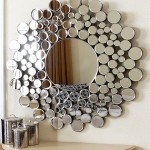Can You Screen Mirror From Android to Laptop?
Screen mirroring, also known as screen casting, allows you to display the screen of one device on another, typically a larger screen. For Android users, mirroring to a laptop can be incredibly useful for presentations, sharing content, or simply enjoying multimedia on a larger display. While it's not always as straightforward as one might imagine, there are several methods available to mirror an Android screen to a laptop.
Using a Wireless Connection
The most convenient way to screen mirror from Android to a laptop is through a wireless connection. This typically involves utilizing a feature called "Miracast" or a similar protocol. Here's a breakdown of how it works:
1.
Enable Miracast on your Android device:
Navigate to your device's settings, look for "Display," and then enable "Wireless Display" or "Miracast." Different Android versions might have slightly different terminology. 2.Ensure your laptop supports Miracast:
Many modern laptops come equipped with Miracast support, either built-in or through drivers. You might need to enable it within your laptop's display settings. 3.Scan for and connect to your laptop:
Once Miracast is enabled on both devices, your Android will scan for available displays. Select your laptop from the list, and a connection should be established.However, Miracast has its limitations. It might not work with all Android devices or laptops, and the connection quality can be inconsistent. Additionally, it requires both devices to be relatively close to each other.
Utilizing a USB Cable
If you prefer a more reliable connection, using a USB cable can be a viable option. There are a couple of ways to achieve this:
1.
Using Android's built-in "USB Debugging" feature:
This method requires you to enable "USB Debugging" on your Android device. This feature allows your laptop to interact with your Android device at a deeper level, enabling screen mirroring. You can find the "USB Debugging" option within the "Developer options" section of your Android settings. 2.Utilizing third-party applications:
Several apps available on the Google Play Store offer screen mirroring via a USB cable. These apps often provide more features and customization options compared to the built-in method. However, be cautious when downloading apps from unknown sources, as they might contain malware or compromise your device's security.While USB mirroring offers greater stability, it requires physical connection and can be less convenient for presentations or casual viewing.
Employing Third-Party Applications
If neither wireless nor USB connections work for you, there are third-party applications that can facilitate screen mirroring between Android devices and laptops. These apps typically work through a combination of wireless and software-based methods:
1.
ApowerMirror:
A popular choice, ApowerMirror offers screen mirroring across various devices, including Android and Windows laptops. It supports both wireless and USB connections, providing flexibility for different scenarios. You can download ApowerMirror from its official website or the Google Play Store. 2.AirDroid:
Known for its remote control capabilities, AirDroid also allows screen mirroring from an Android device to a laptop. It features a user-friendly interface and offers other functionalities like file transfer, notification mirroring, and more. You can find AirDroid on its website or the Google Play Store.These applications often provide more control over the mirroring process and can offer additional features not available through native methods. However, they typically require installing software on both your Android device and laptop, and some apps might have limitations in free versions or require a paid subscription.

Top 3 Ways To Cast Pc Screen Android Phone No Cable Required

5 Ways To Screen Mirror Android Pc Or Laptop New Tech World

How To Mirror Android Pc 2 Simple Ways Minitool Partition Wizard

To Cast Your Android Phone On Pc Via Screen Mirroring Resource Centre By Reliance Digital

Swiftly Cast Android To Windows 10 Pc With 5 Approaches

Android Screen Mirror To Laptop Pc Without Any

How To Stream Android Screen Pc With Audio

2024 Updated How To Mirror Android Pc Without Wi Fi

How To Screen Mirror Your Android Smartphone On Laptop Pc

How To Mirror Android Screen Windows 11 Geeksforgeeks








